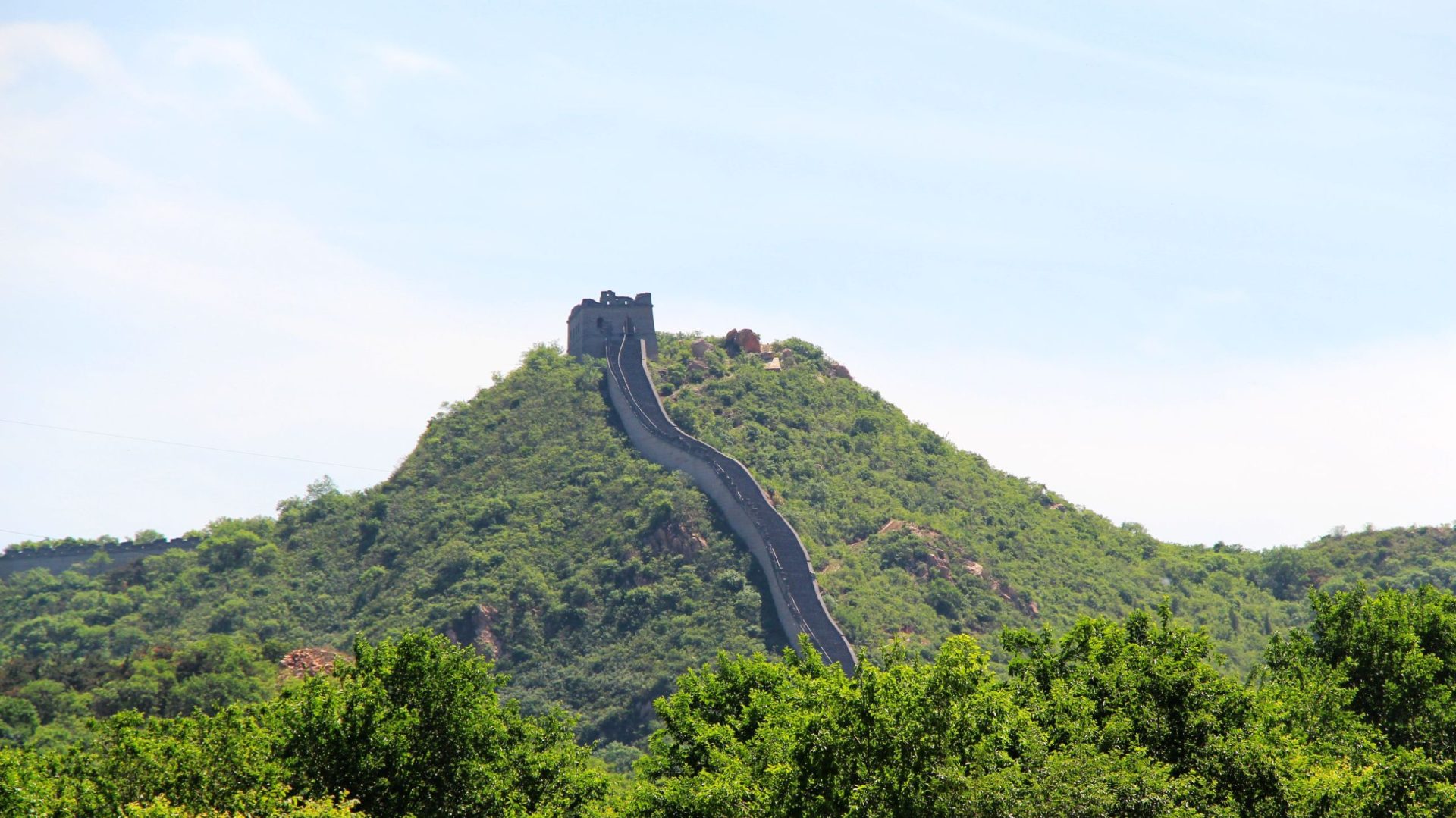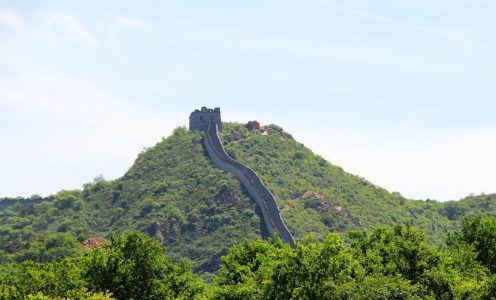Why is the Great Wall rather well-known?
Ever wonder why among the most famous sites in the world the Great Wall of China is one of? Is it the mystery surrounding it, the ancient past, or the sheer size? Understanding the Great Wall’s history can help one to appreciate its cultural value and the reason it attracts millions of visitors annually since it is as complicated and intriguing as the construction itself.
The Great Wall of China is an ancient masterwork, a monument to human endurance, and more than just a wall—it represents China’s might. Covering more than 13,000 miles over China’s untamed terrain, it passes via mountains, plateaus, and deserts from the Bohai Sea in the east to the Gobi Desert in the west. It is understandable that this enormous engineering achievement is sometimes referred to as among the marvels of the world.
But why was it constructed in first place? Why is this enormous construction significant? Understanding the history of the Great Wall helps one to grasp the connection of ancient China with its surroundings, neighbors, and security-seeking process.
I write this article in purpose to walk you through the beginnings, growth, and important historical events of the Wall, illustrating how it changed across millennia to become the ongoing emblem of China’s power that we know today. By the end of this trip, you will not only grasp the historical relevance of the Great Wall but also the reasons it still enthralls tourists from all around.
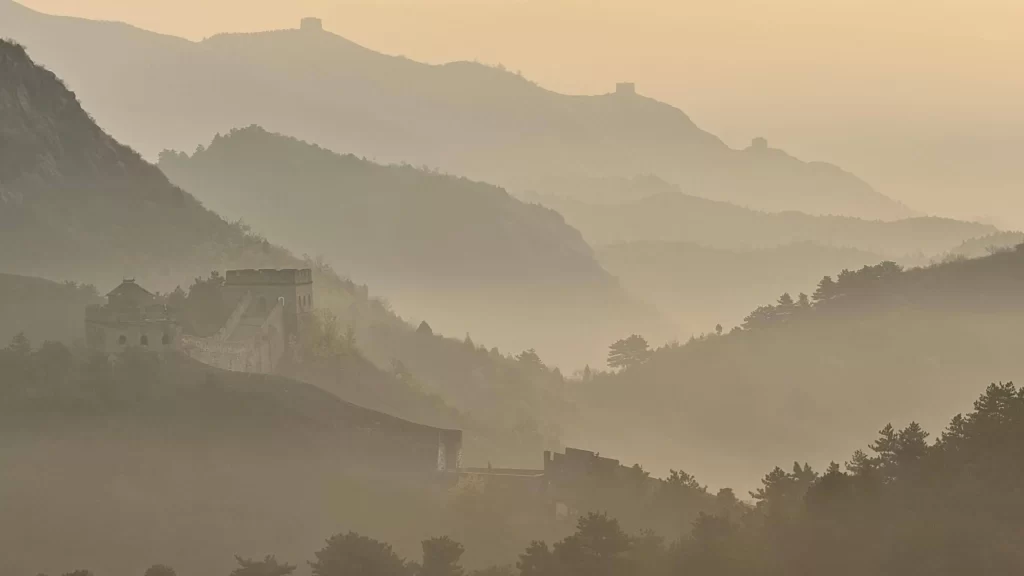
The Early Years (7th–4th Century BCE) Origins of the Great Wall
Imagine a time when China was not yet unified and several states were at continual conflict with one another. During this stormy time of the Warring States (475–221 BCE), local governments erected walls and fortifications to guard against invaders—mostly northern nomadic tribes. The earliest walls were little, isolated obstacles erected by separate states, not the vast, continuous construction we know today. Built from dirt, wood, and stone, these rudimentary but useful defenses against the formidable northern tribes of the Xiongnu were created.
Every one of the rival states came to see during this period the need of a robust defense to guard their resources and frontiers. Though not connected, the walls signaled the start of what would later become an ongoing defense line. Historians concur that these early initiatives, long before the well-known Qin Emperor would bring them together into one logical construction, were the source of the Great Wall.
The Zhao, Qi, Yan, and Wei states were the first rather noteworthy wall-like constructions. These somewhat short fortifications were typically constructed along significant trade routes. The true revolution, though, came with the Qin Dynasty (221–206 BCE), when Emperor Qin Shi Huang started one of the most audacious building projects in Chinese record. The Great Wall as we know it started to take shape and its importance started to rise around the end of the Warring States period.
The First Unified Wall of the Qin Dynasty (221–206 BCE)
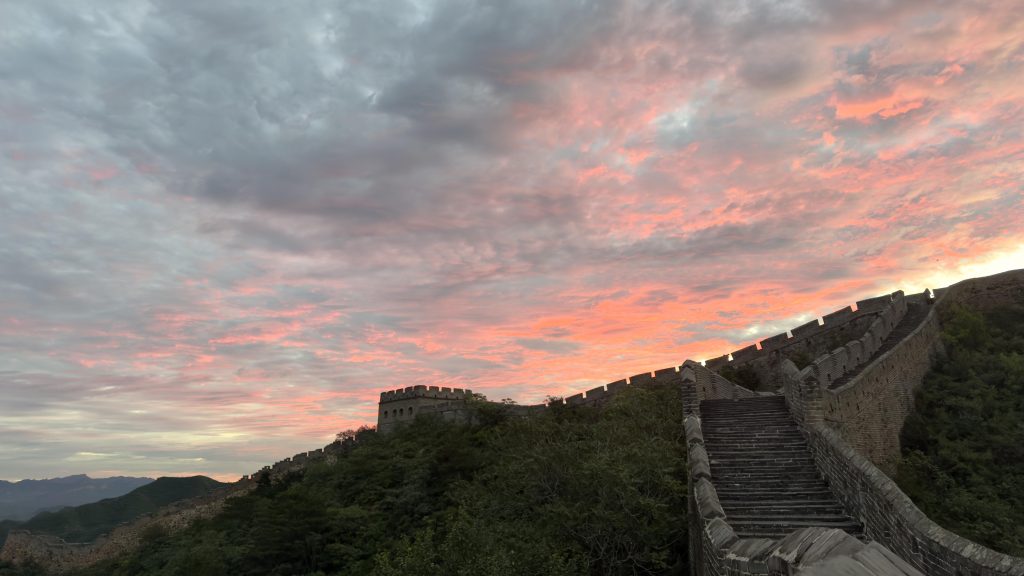
Why did Qin Shi Huang, the first emperor of China, choose to unite these fortifications into one great defense barrier? The key is his ambition as well as the dangers from the north. First emperor of the Qin Dynasty, Qin Shi Huang aimed to establish a centralized and strong kingdom after China united in 221 BCE. But he also understood that the integrity of his recently united empire was continuously threatened by the wandering Xiongnu tribes from the steppes of northern China.
Qin Shi Huang’s answer was revolutionary: he chose to unite the already-existing walls erected by the several warring nations into a single continuous construction. The Great Wall was beginning to take shape. Although many people link the Qin Dynasty with the more well-known sections of the Wall, it is crucial to remember that the Qin version of the Wall was mostly constructed from rammed earth rather than the majestic stone construction we know today.
These fortifications were intended at the time not just for defense against the Xiongnu but also for keeping authority over the commerce routes and populace inside the empire. The emperor’s objective was not only defense but also a means of imposing his power all throughout the kingdom. Controlling both people and territory, Qin Shi Huang’s great might was symbolized by the Great Wall.
Though it set the groundwork for later walls, the wall built during the Qin Dynasty was not the same as the well-known stone counterpart that visitors come across today. The engineering techniques developed during this period helped to open the path for later Wall design advancements including the use of stone, brick, and more sophisticated materials. This early form of the Great Wall was a vital instrument in safeguarding the empire and stopping invasions, notwithstanding early building difficulties.
The vast manpower engaged in the building of the Qin Wall is one feature that distinguishes it. The project severely affected thousands of laborers, troops, and inmates who were compelled to work on the Wall. The hard weather and tiredness caused many of deaths during the process. But the labor of the Qin Dynasty prepared the way for the even more complex building projects under next dynasties.
Although by modern standards Qin Shi Huang’s Great Wall was somewhat short, it was strategically significant. Its intended use was as a barrier against the Xiongnu nomads and a means of tracking commerce and settlement activity along the northern boundary. Although this first wall was not as aesthetically pleasing as later iterations, it was a very useful construction that was absolutely vital in Great Wall history.
Comprising a mix of wood and clay, the walls of the Qin Dynasty span around 5,000 kilometers (3,100 miles). Though they did reflect the first significant step towards the ultimate magnificence of the construction, they were not continuous in the way the Great Wall is usually portrayed today. Though the Qin Dynasty collapsed soon after the emperor’s death, the work accomplished during his rule prepared the ground for the walls’ ultimate change into a symbol of national unity and might.
Important Information for Travelers:
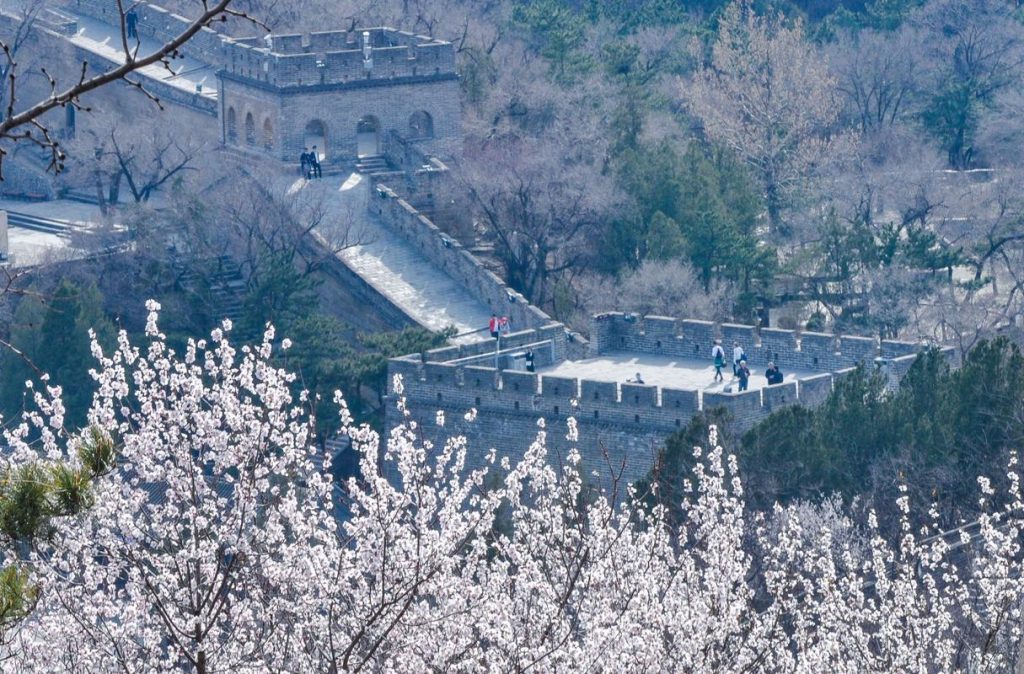
Originating in the Warring States era, when several kingdoms constructed their own defenses against northern invaders, the Great Wall of China has origins.
The first emperor of China, Qin Shi Huang, was instrumental in bringing these walls together into one long construction to guard the just established Chinese kingdom.
Over 2,000 years of history define the Great Wall, and building it was an enormous effort involving millions of laborers and troops.
The Great Wall’s several parts, many of which have been rebuilt, particularly during the Ming Dynasty, should be noted by visitors to reflect the grandeur we presently link with it.
Knowing the background of the Great Wall improves your respect of its scale as well as your knowledge of the political and cultural factors that molded old China.
The Great Wall We Know Today: The Ming Dynasty (1368–1644)
Have you ever wondered how the Great Wall evolved from a set of disjointed fortifications into the world-class, magnificent construction drawing millions of tourists nowadays? The Ming Dynasty, when the Great Wall took on its famous shape combining military strategy with amazing building, holds the solution in Chinese history.
Why did the Ming Dynasty decide to devote so much energy toward strengthening and enlarging the Great Wall? It was mostly related to the growing necessity to defend the expanding Ming Empire as well as the increasing threat from the northern Mongol tribes. Aware of the results of their lack of protection, the Ming rulers defended their country to a whole fresh degree.
Massive building projects during the Ming era turned the Great Wall into the powerful monument we know today. Unlike previous iterations constructed of rammed earth or wood, the Ming Dynasty concentrated on creating a stone and brick wall, so greatly strengthening and resisting against attack. The longest continuous wall in the world, the Ming Wall covered 13,000 kilometers. Built with amazing accuracy, it had watchtowers, forts, and beacon towers that not only offered defense but also improved military communications throughout the Wall.
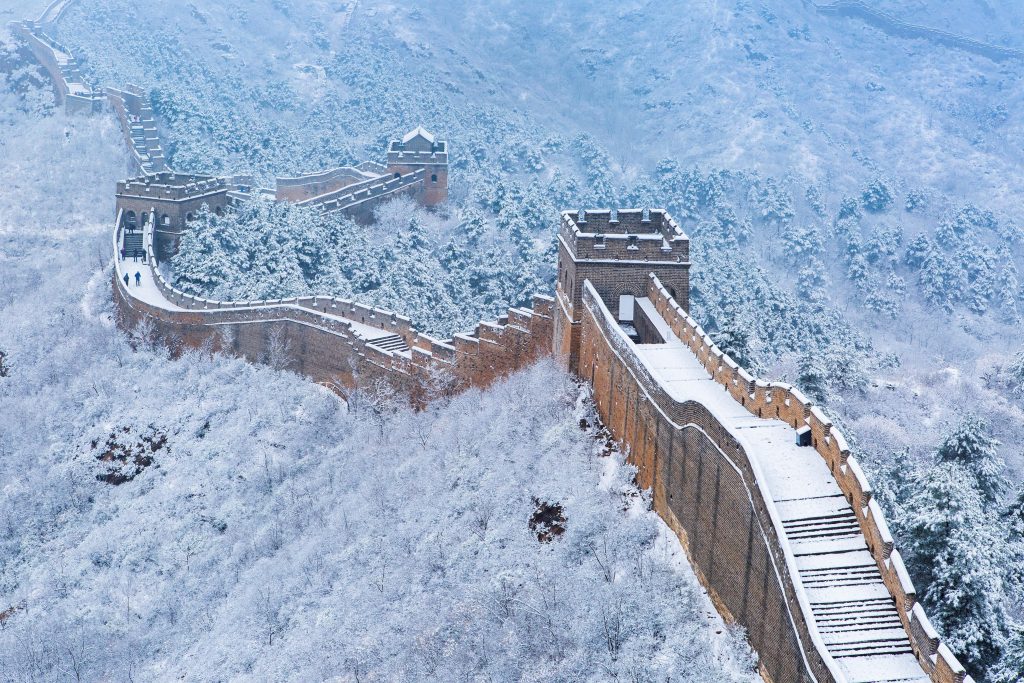
Why did the Ming Dynasty repair the Great Wall?
Once the Yuan Dynasty (1271–1368) fell and the Ming grew, the Mongols had once more become a serious danger. Driven to stop yet another Mongol invasion, the Ming rulers planned to totally reconstruct the Great Wall. They understood they required a robust, constant wall able to endure protracted sieges and invasions if they were to protect the empire.
The Great Wall was strengthened and rebuilt during this period using more robust materials such stone, brick, and lime mortar, hence increasing its dependability. The Ming Dynasty also made sure the wall included numerous elements meant to improve security, including signal fires to warn troops of any approaching attacks and watchtowers and garrison posts.
The Ming Great Wall more than just a wall. The security of the empire depends much on this strategic military defensive system. It was about keeping control, guaranteeing order, and indicating strength rather than only defense. These characteristics elevated it above mere physical construction and became a representation of China’s military might.
How did the Ming Dynasty change with the Great Wall?
The Ming Great Wall changed the empire fundamentally. Its building enhanced China’s military capacity but also helped define the Ming Dynasty as a strong force in East Asia. The Wall let the Ming emperors protect their territory against invading armies and confirm their rule over northern China. The Ming Dynasty thus saw a rather steady period with less northern invasions.
But the Wall served more than only protection; it was also used to control trade and immigration, so managing the movement of people and products between China and the outside world. The Ming emperors could guarantee that only obedient traders and visitors could enter the empire by regulating the passage along the Wall, therefore managing the economy.
Important Ming Great Wall Characteristics
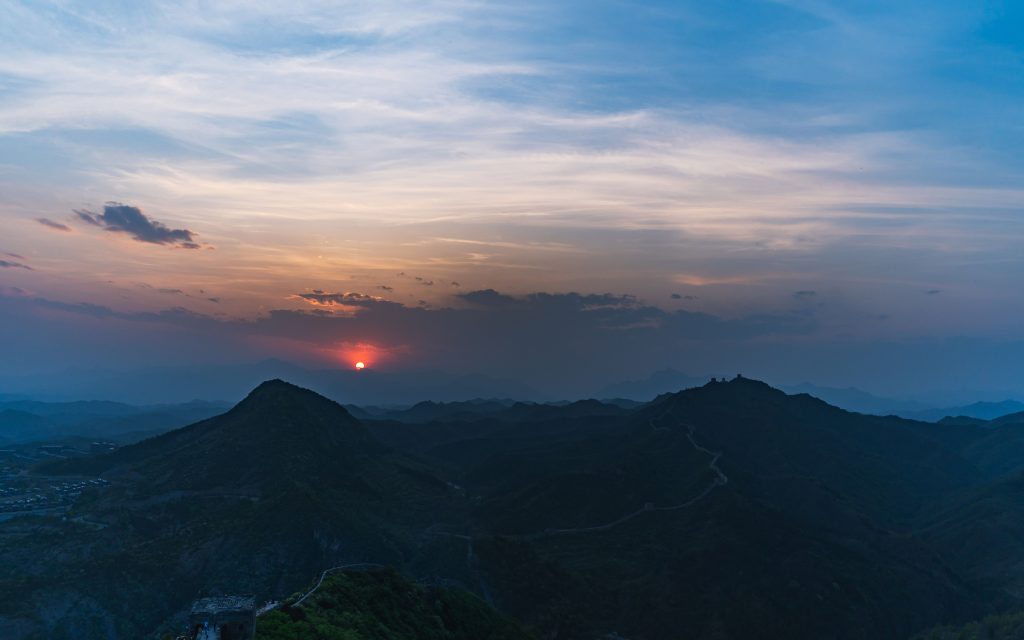
The Ming Great Wall’s sheer enormity and intricacy distinguishes it from past iterations of the Wall A far more advanced military defense system than its forebears, the Ming Great Wall is a fortified system with watchtowers, forts, and garrison sites. Strategically situated at intervals along the Wall, these watchtowers and garrisons offer continuous monitoring of the surrounding territory.
The Ming Dynasty also advanced the methods of building the Wall. Whereas earlier Wall designs made of wood and soil, the Ming Wall was constructed of stone, brick, and even some iron—more resistant to weathering and wear. This made the Ming Great Wall a sturdy and long-lasting construction as well as an amazing engineering marvel.
The Fall and Conservation of the Great Wall
Why is the Great Wall such a massive emblem of Chinese history and why has it lasted for so long? Its great historical relevance and the efforts of following generations to protect it will help to explain the response. Like everything else, though, the grandeur of the Great Wall was transient. The significance of the Wall started to fade following the Ming Dynasty as fresh military advancements and political changes rendered the Wall less pertinent.
Why Was the Great Wall falling apart?
The Great Wall lost importance to the Chinese officials as the Ming Dynasty fell in 1644. The Ming Dynasty gave way to the Qing Dynasty, which stretched China’s boundaries well beyond the extent of the Wall, so the Wall was no longer seen as required for the empire’s security. Rather, the Qing leaders concentrated on using diplomacy, military operations, and trade to increase the empire by other channels.
Much of the Wall thus became run-down. Natural erosion and weathering over time led the brick and stone portions to break down. Many of the Wall’s watchtowers and fortifications were abandoned or destroyed; it was no longer the crucial military construction it once was.
Still, the Great Wall was not forgotten even in decline. Particularly in locations now popular for tourism, efforts were undertaken in the 20th century to protect what remained of the wall. Many parts of the Great Wall have been painstakingly rebuilt today to exhibit to visitors what Ming-era construction looked like.
Efforts for Conservation
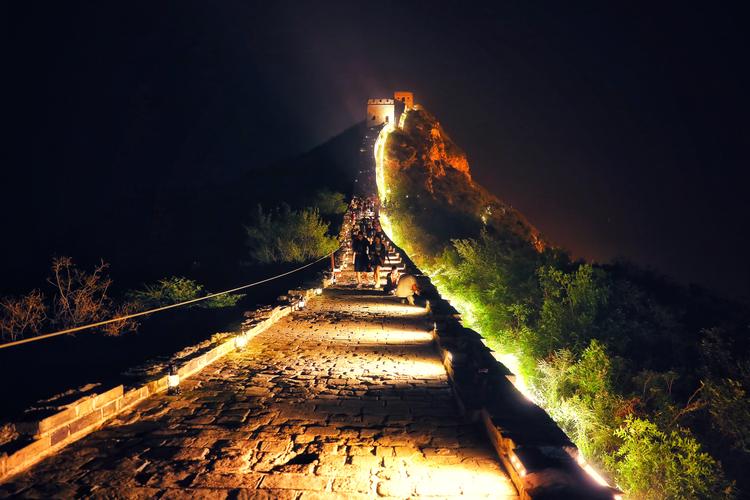
China started major initiatives to protect and rebuild some parts of the Great Wall after realizing its historical significance during the 20th century. Many of the portions around Beijing, notably the well-known Badaling and Mutianyu districts, have been completely rebuilt and welcome visitors.
While some sections of the Great Wall have been rebuilt for tourism, others—especially those in more isolated areas—have been kept unaltered. Though they would have to go a bit further to get there, visitors to certain areas can enjoy a more real and less packed perspective of the Wall.
What You View Right Now
Seeing the Great Wall today offers a special chance to view a living work of art. Certain areas, such Badaling, have been extensively rebuilt to serve visitors with cable cars, simpler access, and maintained paths. Travelers who like to see the majesty of the Wall without too much effort will find these sections perfect.
Areas like Simatai, Jiankou, and Gubeikou provide more challenging sections for those seeking a more adventurous experience whereby you may hike along original Wall sections and take in amazing views of the surrounding landscape. Though less rebuilt, some areas provide a more personal and real view of the Great Wall, therefore enabling visitors to value the Great Wall’s past up close.
Relevance of Modern Days: The Great Wall as a Symbol

Why still enthralls so many people the Great Wall? People all throughout the world still find great resonance in the Great Wall, notwithstanding its historical fall-off. Beyond mere architectural achievement, the Great Wall captures China’s own perseverance, power, and unity.
An emblem of China’s strength
The Great Wall is still a potent emblem of China’s strength, unity, and will to overcome obstacles even if its original military use is no more relevant. Many people view the Great Wall of China as a symbol of the will of the Chinese people to defend their territory, culture, and identity.
The Great Wall is now a tourist destination, a cultural emblem, and a necessary component of Chinese history in the modern day. From its modest origins as a collection of little defenses to its prominence among the most famous sites on Earth, it reminds guests of the amazing history of the Great Wall.
Modern Great Wall: Global Icon
Millions of people from all around the globe visit the Great Wall annually today. People visit the Wall to marvel at its sheer enormity and expanse regardless of their interests—history, photography, or casual travel. It still motivates visitors who visit since it is evidence of the creativity and will of the people who constructed it.
The Great Wall provides visitors with an opportunity to immerse themselves in a piece of history that has formed China’s past and still influences its present in addition to a chance to see an old construction site. Seeing the Great Wall reminds us strongly of how history can come alive and inspire us whether we are climbing its old stones or staring out over the breathtaking scenery.
The Silk Road and the Great Wall

Beyond only military defense, have you ever considered how the Great Wall fits into China’s epic history? Its link to the most well-known ancient trade route in the world, the **Silk Road**, plays one of most interesting roles. What effects on trade, culture, and even human movement did the **history of the Great Wall** entwine with this essential network?
In what ways might the Great Wall safeguard the Silk Road
When we consider the Silk Road, it is simple to visualize caravans of traders carrying silk, spices, and valuable items passing across great deserts and perilous mountain ranges. But did you know that these commerce paths were greatly safeguarded by the Great Wall?
Though the Silk Road was a network of linked paths rather than a single road, nomadic tribes including the Xiongnu, Mongols, and other Central Asian groups frequently attacked the northern section. For the silk traders and their valuable load, these invaders presented a continual hazard. Consequently, the Great Wall was constructed deliberately to act as a defense mechanism for trade as well as for traders themselves.
According to the history of the Great Wall various parts of the Wall were built especially to protect the most sensitive portions of the Silk Road. Originally intended for defense, it subsequently grew more interwoven with trade routes, so safeguarding commerce.
Travel and Trade Affected by the Great Wall
The Great Wall helped commerce and people flow in addition to being a military construction. For traders passing the Silk Road, it served as a security barrier during peace. Imagine traders crossing the perilous Gobi Desert or the harsh steppes of Inner Asia knowing that the Great Wall would guard them from invaders.
Furthermore housing guard posts and way stations within the fortifications along the Wall, they helped control the movement of goods. These postings improved the effectiveness of the Silk Road trade by allowing traders and visitors to relax and get ready for their next leg of their tour.
Although the Great Wall was a defensive action, it regulated and helped foreign visitors wishing to enter the empire pass through China, not only blocked entry to the country. It was about control and preserving peace along the Silk Road routes as much as defense.
The Great Wall as a Crossroads in Culture
The Great Wall’s history also emphasizes the cultural interactions along the Silk Road. Through regions under Wall protection, traders from the Middle East, Europe, and Central Asia went through sharing not just commodities but also ideas, beliefs, and technology.
Along the Silk Road, one of the most important cultural interactions was the introduction of Buddhism into China from India across these carefully guarded trade paths. Actually, the Great Wall shielded many Buddhist monks who visited China from their path to the capital cities where they would disseminate their lessons. Thus, the Great Wall’s function was not only military defense but also a cultural conduit that let religious ideas proliferate and information could be shared.
—/-
Stories and Legends Around the Great Wall
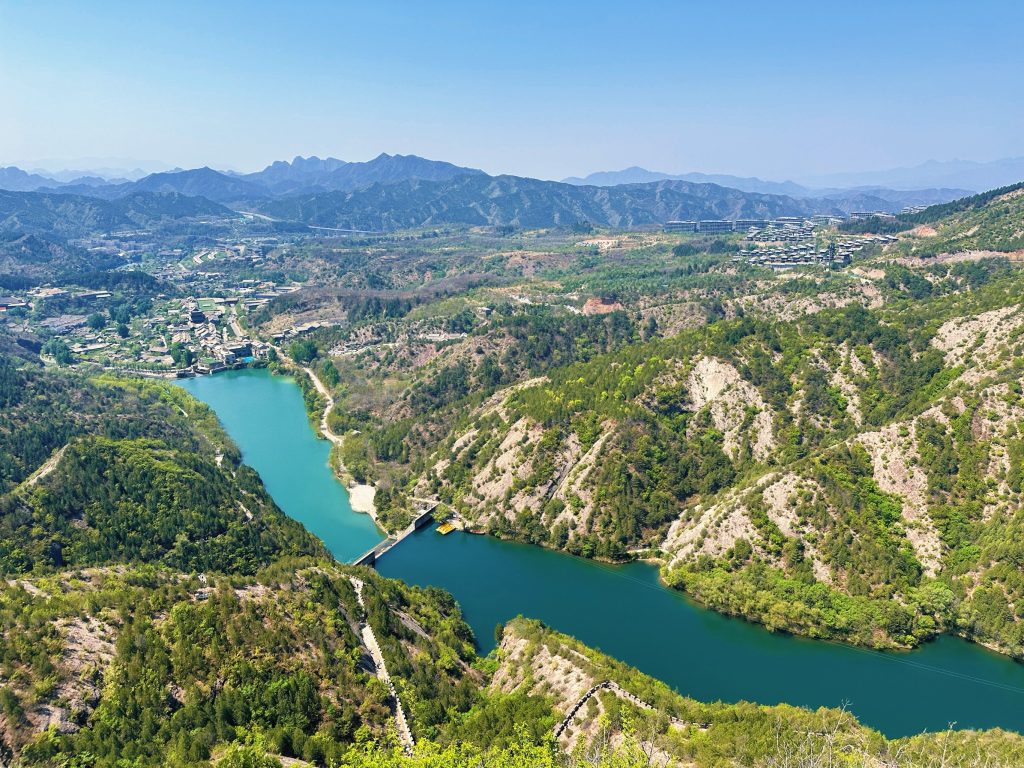
The Great Wall’s physical presence is only one aspect that makes it so intriguing; another is the mythology and tales surrounding it. Are the legends handed down through the years known to you? How could these stories help to define the history of the Great Wall?
The Legendary “First Emperor’s Wall”
One of the most often told stories about the Great Wall centers on Qin Shi Huang, the First Emperor of the Qin Dynasty. Legend holds that Qin Shi Huang ordered the building of the Great Wall to guard his realm against northern invaders. Though this could be partially accurate, the history of the Great Wall presents another picture.
Qin Shi Huang did indeed link existing walls in northern China and most definitely started the early Great Wall building. Still, a lot of what we know now as the Great Wall wasn’t built until the Ming Dynasty centuries later. Not the stone and brick that define the Ming Wall, the Qin Dynasty walls were built from rammed earth.
Because Qin Shi Huang’s larger-than-life figure is also well-known for having built the Terracotta Army and united China, this story has stayed popular. Still, his historical relationship to the Wall is far more metaphorical than accurate.
THE Ghosts of the Great Wall
Another myth that endures around the Great Wall is that of the ghosts of the laborers who perished during building. Many workers, pushed into demanding labor, reportedly died from disease, tiredness, or were buried within the Wall itself. With the laborers’ restless spirits still wandering the Wall today, the myth that the Great Wall is haunted emerged.
Though sinister, this fable captures the great human sacrifice required in Wall building. Although the building of the significant Wall is thought to be among the biggest engineering achievements in history, it also resulted in significant human sacrifice. Although the ghostly legends could be overdone, they highlight the hard reality experienced by Wall builders.
The “Bricks of Love” Legend
A less well-known yet romantic legend relates of a woman called Meng Jiangnu whose husband was conscripted to build the Great Wall. According to the narrative, her husband was compelled to work until he passed away; following his death, she traveled to the Wall to provide him appropriate funeral customs. She is claimed to have sobbed so powerfully when she arrived at the Wall that part of the Wall fell exposing his body. Meng Jiangnu’s story still represents love, sacrifice, and the human cost of the building of the Great Wall today.
Modern Travel and the Great Wall
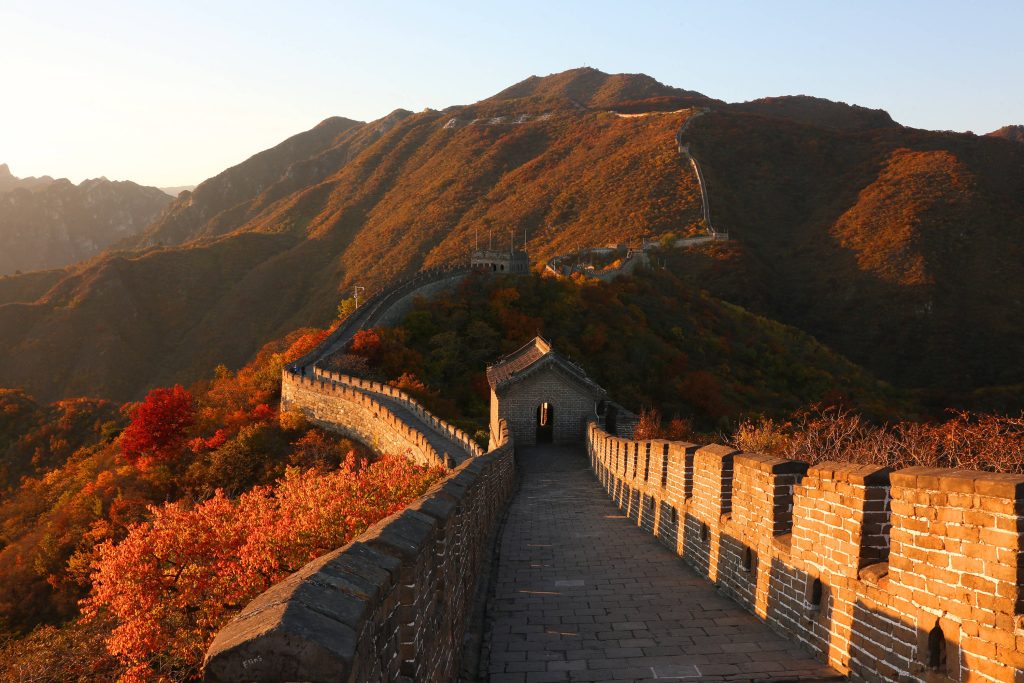
Have you ever considered what it would be like to stroll the Great Wall right now? From a military establishment, how has it changed to become a major tourist attraction? The Great Wall’s history makes it not only a symbol of China’s past but also a major focus of curiosity for visitors from all around the globe.
Great Wall Travel’s Emergence
Drawing millions of visitors annually, the Great Wall has become among the most visited sites in China since the 1980s. But how did this change from an old military fortification to a travel destination draw-in occur? The solution resides in the evolving view of the Wall from a symbol of military might to a cultural icon.
The historical relevance of the Great Wall drew tourists from all around the world as the planet grew more linked, eager to see a construction spanning millennia of Chinese history. Anyone interested in learning about past civilizations and savoring the excitement of walking in the footsteps of history would find the magnificent grandeur of the Wall and rich history ideal location.
Today’s Great Wall Visit
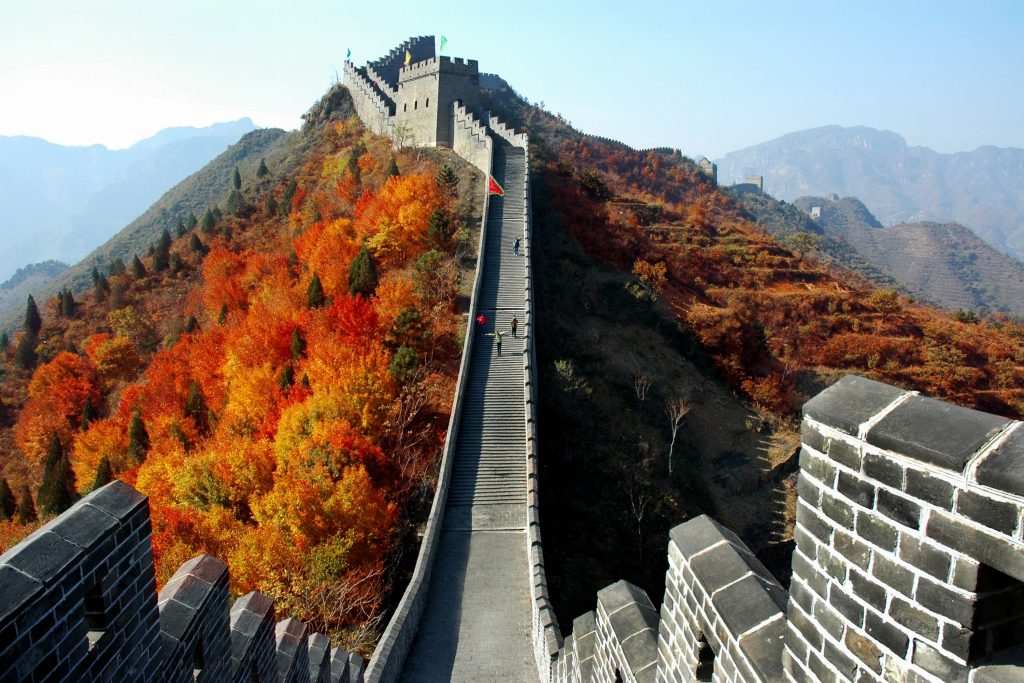
There are several methods to see the Great Wall, should you be considering a vacation there. Among the most often used portions, Badaling, Mutianyu, and Jinshanling have been well-preserved and provide contemporary conveniences including cable cars, restaurants, and even luxurious hotels close. Travelers of all ages and capacities will find it simple to enjoy the Great Wall in comfort from these more easily accessible portions.
Sections like Jiankou and Simatai provide less commercialized choices for people looking for a more tough, adventurous experience; you can hike along original Wall sections often with less tourists and more dramatic views. These portions offer a real link to the history of the Great Wall, therefore enabling you to enjoy its grandeur and beauty while fully submerged in its past, should you are up for a task.
Travel’s Effects on Preservation
The preservation of the Great Wall has much owed to tourism. Many of the most frequented areas are painstakingly kept such that the Wall stays open and safeguarded for next generations. Some more isolated areas, however, suffer; erosion and weathering compromise their stability.
Travelers should be aware of the influence they bring about on historical sites. While visiting the Great Wall, be sure to honor the efforts at preservation and steer clear of wall damage. Follow approved paths and stay away from graffiti or other kinds of vandalism since the future of the Wall depends on our treatment of it right now.
Cultural and Historical Legacy of The Great Wall
Seeing the Great Wall is a trip across time as much as a physical one. This is an opportunity to engage with the rich history of the Great Wall from its modest origins to its function in China’s military and cultural identity. Walking among its historic stones allows you to experience the core of China’s past, present, not only a wonder of engineering.

